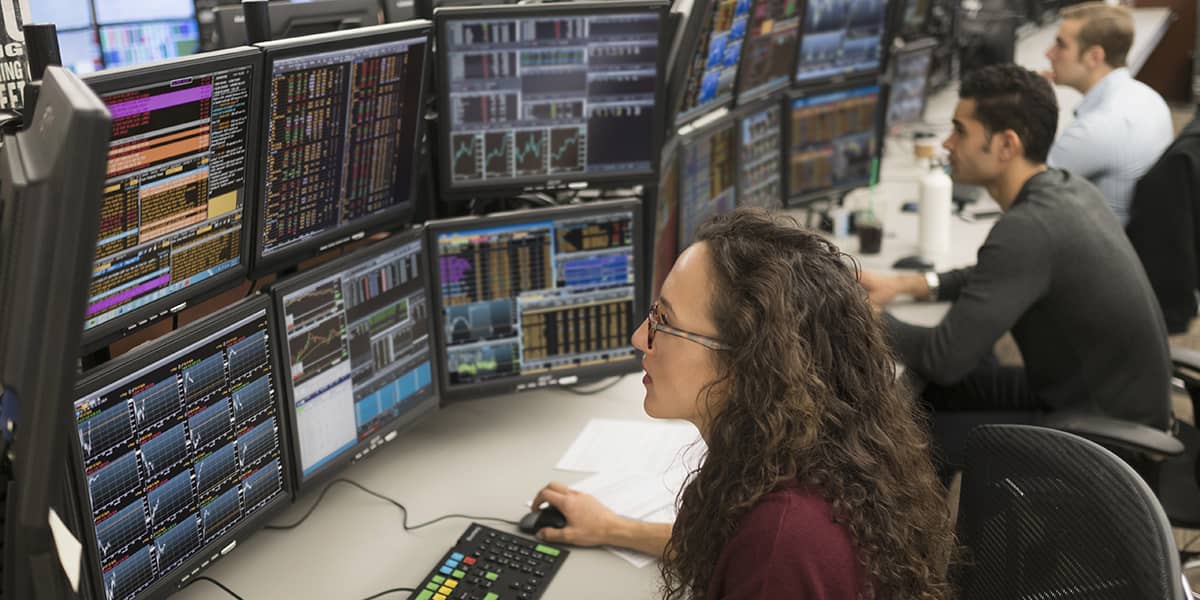
HERs passen machine learning op grote schaal toe in handelsalgoritmes
In Nederland gevestigde grote Handelaren voor eigen rekening (HERs) passen op grote schaal machine learning toe in hun handelsalgoritmes. 80 tot 100% van de handelsalgoritmes die zich richten op liquide en gestandaardiseerde financiële instrumenten zoals futures of equity leunen op machine-learning-modellen, blijkt uit onderzoek (pdf, 2.62 MB) van de AFM onder vier grote HERs. Daarbij voorspellen de modellen doorlopend de prijs van het financieel instrument op basis waarvan orders worden aangepast of geannuleerd. De complexiteit van de modellen brengt ook serieuze risico’s met zich mee.
In het kort
• AFM analyseert toepassing van ‘machine learning’ in handelsalgoritmes bij 4 grote HERs
• Partijen maken veelvuldig gebruik van machine-learning-modellen
• Modellen voorspellen prijs van financieel instrument waarop gehandeld wordt
• Complexiteit van modellen brengt risico’s met zich mee
• Modellen moeten uitlegbaar zijn en vragen om goede controles
Machine learning is alom aanwezig op de financiële markten. Er zijn tal van vacatures voor data-analisten met ervaring in machine learning en er is een voortdurende stroom van wetenschappelijke publicaties over de theoretische toepassing van machine learning in handelsalgoritmes. Omdat de HER-populatie in Amsterdam relatief groot is en HERs in de sector vooroplopen in algoritmische handel, wil de AFM met dit onderzoek bijdragen aan een beter inzicht in de toepassing van machine learning.
Voorspellende waarde
HERs passen machine learning in hun algoritmes vooral toe om doorlopend de prijs van een future of aandeel te voorspellen. Hierbij kijkt het model met name naar allerlei uiteenlopende karakteristieken van het orderboek, in plaats van naar fundamentele karakteristieken. De meest recente data, de laatste (micro-)seconde, heeft de meest voorspellende waarde. De voorspelde prijs wordt voortdurend geüpdatet en zet vervolgens het handelsalgoritme in werking.Features
De prijsvoorspelling wordt gebaseerd op de input van ‘features’ waarin bepaalde karakteristieken van het orderboek worden gevangen, zoals balans tussen koop en verkoop, prijstrends en kwantiteit in het orderboek. De algoritmes gebruiken doorgaans honderden of duizenden van dergelijke features, die vaak vele variaties op dezelfde karakteristieken behelzen. Ieder feature heeft een bepaalde parameter (gewicht) die regelmatig worden geüpdatet. Dit maakt dat de modellen mogelijk erg complex zijn.Risico’s
De AFM heeft zich in haar onderzoek beperkt tot het in kaart brengen van de risico’s die voortvloeien uit hetgeen onder de motorkap van een handelsalgoritme zit. Daartoe zijn er twee geïdentificeerd: gebrek aan uitlegbaarheid en het mogelijk worden gemanipuleerd. In haar onderzoek heeft de AFM niet onderzocht wat de mogelijke risico’s zijn van dit type algoritmes (voor de stabiliteit) op de kapitaalmarkten an sich. Enkele gerelateerde risico’s worden overigens wel in het rapport genoemd.De AFM stelt vast dat de werking en de complexiteit van de machine learning modellen maakt dat het mogelijk moeilijk te verklaren is hoe het model komt tot een bepaalde voorspelling waaruit vervolgens een bepaald handelsgedrag voortkomt. De AFM verwacht van ondernemingen dat ze kunnen uitleggen waarom orders naar de markt zijn gestuurd. Daarnaast is het van belang dat er goede eerste- en tweedelijnscontroles aanwezig zijn zodat verstoringen worden voorkomen. Ten slotte wijst de AFM erop dat de focus van de algoritmes op het orderboek maakt dat dit soort type algoritmes gevoelig zijn voor eventuele (opzettelijke) verstoringen in dit orderboek.
Tags
Banken & verzekeraars Beleggingsinstellingen Beleggingsondernemingen Digitalisering Effectenuitgevende ondernemingen Handels- & afwikkelplatformenContact bij dit artikel

Wilt u het laatste nieuws van de AFM ontvangen?
Schrijft u zich dan in voor onze nieuwsbrief, dan houden wij u op de hoogte.